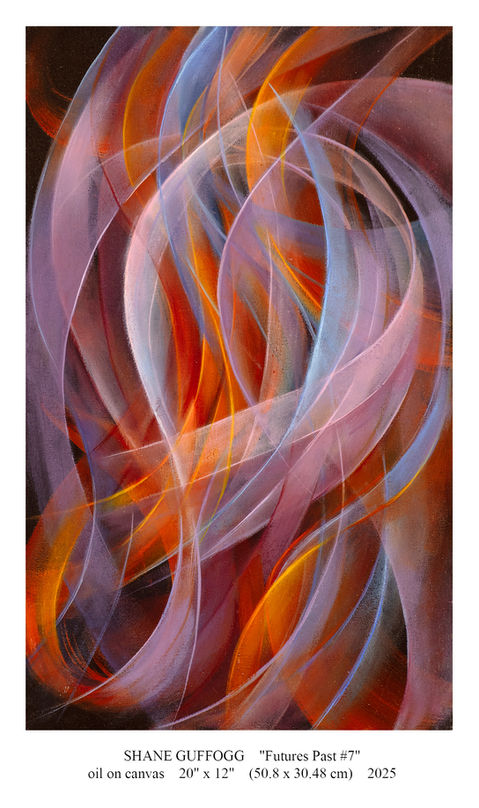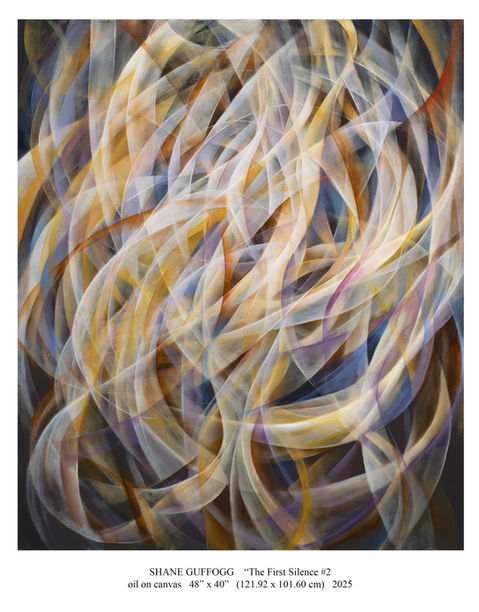INTRO
셰인 거포그: 기억 속의 미래
2025년 9월, 서울 갤러리 장에서 셰인 거포그의 신작 연작 Memories of Our Future가 전시된다. 캘리포니아 스트라스모어 목장에서 제작된 이 작품들은 빛, 시간, 지각에 대한 평생의 탐구를 확장하며 “우리는 시간을 어떻게 보는가?”라는 질문을 던진다.
작업은 사전 스케치 없이 잠재의식에 따라 즉흥적으로 진행되며, 수개월간의 중첩적 결정으로 완성된다. 이 과정은 회화를 시간 속 의식의 기록으로 보는 그의 철학을 반영한다.
거포그의 회화는 교리보다 체험을 중시하며, 친밀하면서도 광대한 감각의 문턱으로 관람자를 초대한다. 이번 전시는 그의 경력에서 중요한 전환점으로, 아름다움과 복잡함의 공존, 보이지 않는 것의 가시화, 기억이 미래로 향하는 안내자일 수 있음을 시각화한다.
시간은 그의 캔버스에서 선형이 아닌 층위로 펼쳐지며, 현재와 과거, 미래가 긴밀히 연결되어 있음을 상기시킨다.
“기억 속의 미래”는 오는 9월 서울 갤러리 장에서 열리는 셰인 거포그의 신작 개인전이다. 그의 국제적 행보가 언제나 되돌아오는 지점—시간, 지각, 그리고 의식을 형성하는 보이지 않는 힘—을 다시 묻는다.
거포그는 제임스 웹 우주망원경의 이미지에서 영감을 받아, 시간을 분절하고 겹겹이 쌓아 올린 유약층을 통해 과거·현재·미래가 동시에 진동하는 포털을 만들어낸다. 그는 말했다.
“과거를 들여다보아야 지금을 인식할 수 있고, 그래야 미래를 이해할 수 있습니다.”
웹 망원경이 보여주는 별의 탄생과 소멸은 그의 사고를 바꾸었다. “시간은 선형이 아니다. 우리가 보는 과거가 바로 현재다.” 그의 붓질은 기억과 가능성을 동시에 담으며, 마치 굴절된 빛의 파동처럼 흐른다. 또한 그의 공감각은 색채를 음악으로 번역해, 화면 위 흔적들이 시각과 청각의 공명을 함께 불러낸다.
나는 그의 작품 앞에 앉으면 빛의 동굴에 들어가는 듯하다. 인공이 아닌 원초적 만화경 속에서 그림자는 장막으로, 장막은 투명함으로 흩어지며, 모든 것은 끊임없이 유동한다. 거포그는 말한다.
“관람자는 여러 순간의 시각을 동시에 목격하게 됩니다. 그것은 관점이 아니라 시간을 초월한 현존입니다.”
결국 “기억은 우리의 미래”는 향수도 예언도 아니다. 그것은 차원이 교차하는 현재의 순간을 살라는 초대이며, 기억과 미래가 하나로 접혀 있음을 보여준다. 그의 회화는 이렇게 말한다:
우리는 기억이자 미래이며, 지금 이 빛나는 순간 속에 접힌 존재다.












